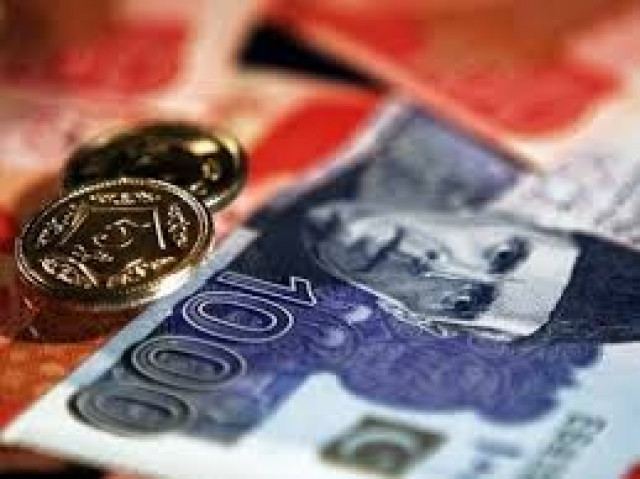Monetary policy: Defying expectations, SBP increases interest rate to fight inflation
Sets the rate at 6% with 25-basis-point rise after a gap of 20 months

Sets the rate at 6% with 25-basis-point rise after a gap of 20 months. PHOTO: FILE
The central bank jacked up the interest rate after maintaining the status quo for 20 months. The rate had stood at a four-decade low of 5.75% since May 2016. It was in double digits at 10% in the first half of fiscal year 2012-13 before inflationary pressures started easing.
Announcing the monetary policy for the next two months, SBP Governor Tariq Bajwa said at a press conference that core inflation - excluding the volatile food and energy prices - continued to remain on a higher trajectory, standing at 5.5% in the first half of current fiscal year compared to 4.9% in the corresponding period of previous year.
This, together with a lagged impact of rupee depreciation and rising international oil prices, was likely to increase overall inflation in coming months, he said.
"Taking into account the impact of all these developments, while the average inflation for FY18 is still projected to fall in the range of 4.5-5.5%, the-end-of-fiscal-year...inflation is likely to inch towards the annual 6% target," the central bank governor said.
SBP expected to keep interest rate at 5.75%: The Express Tribune survey
"(SBP's) Monetary Policy Committee is of the view that in order to preempt overheating of the economy and inflation breaching its target rate, this is the right time to make a policy decision that would balance growth and stability in the medium to long term."
The decision to increase the key interest rate was taken at the "longest deliberation" of the committee in history, he said.
Positives overshadowed
Bajwa said exports grew by a seven-year-high pace of 10.8% and workers' remittances marginally rose by 2.5% in the first half, but a strong growth in imports and rising global oil prices kept fueling the current account deficit, which ate up foreign exchange reserves and overshadowed positive developments on the external trade front.
The current account deficit widened to $7.4 billion in the first half, which was 1.6 times of the deficit in the same period of last year.
SBP's liquid foreign exchange reserves fell $2.6 billion since the end of June 2017 to $13.5 billion on January 19, 2018.
"The exchange rate adjustment in December 2017 is expected to help ease the pressure on the external front," the governor expressed the hope.
Monetary Policy: Key interest rate unchanged at 5.75%
GDP below target
The central bank anticipated 5.8% growth in gross domestic product (GDP) for the full fiscal year 2017-18, which would be slightly lower than the annual target of 6%.
The anticipated growth, if achieved, would be significantly higher than the previous fiscal year's growth of 5.3%.
Pakistan would miss the 6% target "largely due to expectations of a below-target wheat crop because of reduction in the area under cultivation", he said.
Bajwa pointed to sugar, fertiliser and petroleum, oil and lubricants as problem areas in the strongly growing large-scale manufacturing (LSM) sector.
Four key factors
Four key factors of Pakistan's economy have recorded important changes since November 2017 impinging upon the policy rate decision.
Monetary Policy: SBP leaves interest rate unchanged at 5.75%
First, the rupee has depreciated by around 5%. Second, oil prices have risen and are hovering near $70 per barrel. Third, a number of central banks have started adjusting their policy rates upwards, adversely affecting interest rate differentials. Fourth, the output gap has significantly narrowed, indicating a build-up of demand pressures.
Fiscal deficit for the first half is expected to fall close to last year's 2.5%. Progress in the real sector indicates that the agriculture sector is set to perform better for the second year in a row. Production of all major Kharif crops, except maize, has surpassed the level of FY17.
Similarly, LSM recorded a healthy broad-based growth of 7.2% in Jul-Nov FY18 compared to 3.2% in the same period of previous year. "Overall industrial activity is likely to remain strong," he said.
Benefiting from infrastructure and CPEC-related investments, construction and its allied industries were expected to maintain a higher growth momentum, he added.
Higher tax collection and proceeds from the issuance of Sukuk and Eurobond have led to a reduction in net budgetary borrowing which stood at Rs401.9 billion from July 1 to January 12 in FY18 as compared to Rs470.4 billion in the corresponding period of previous year.
Moreover, the delay in the sugarcane crushing also contributed to demand moderation in private sector credit.


















COMMENTS
Comments are moderated and generally will be posted if they are on-topic and not abusive.
For more information, please see our Comments FAQ